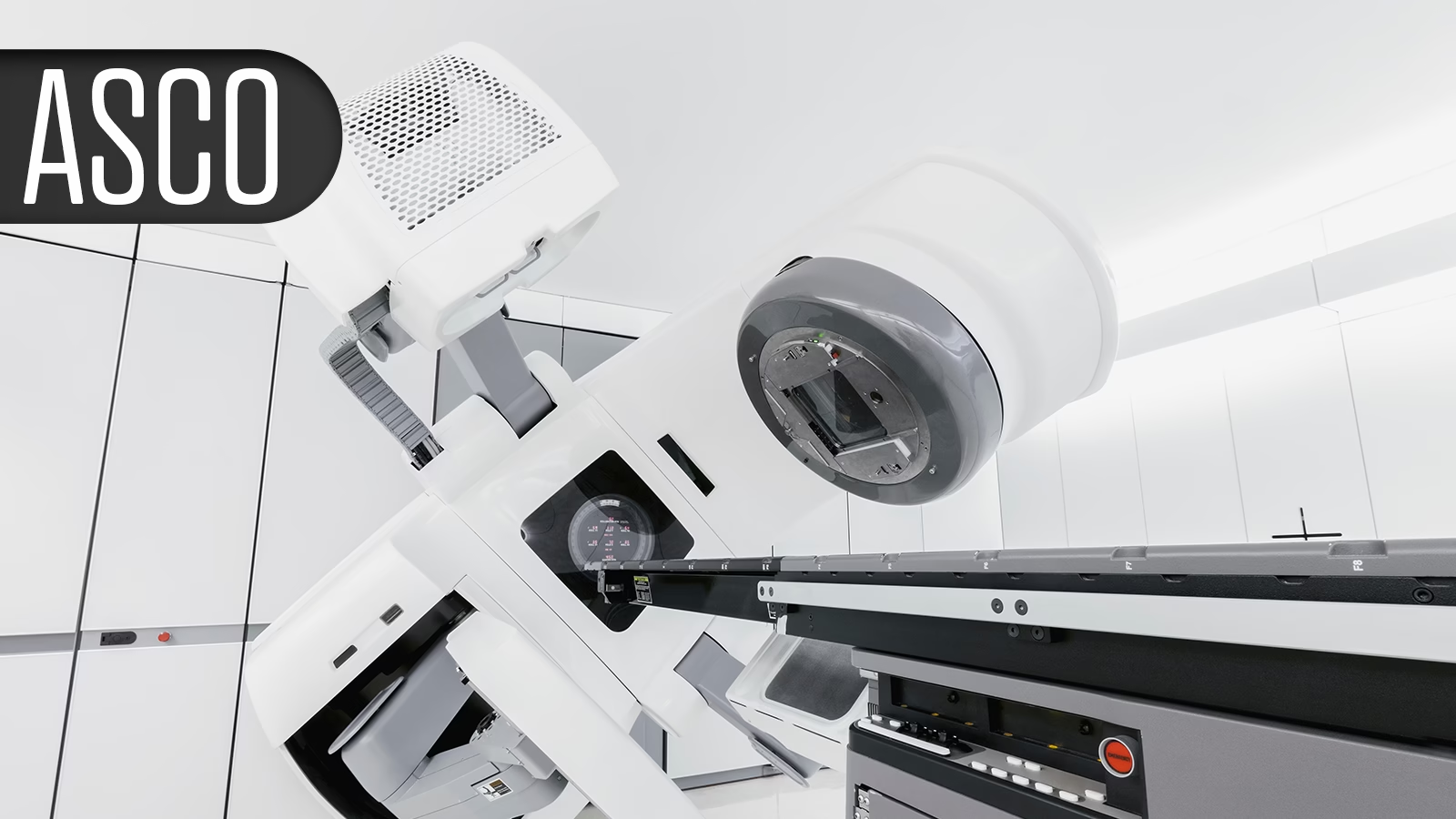CHICAGO — An investigational viral immunotherapy (CAN-2409; aglatimagene besadenovec) blended with a prodrug improved illness-free survival (DFS) when added to customary healing-intent radiotherapy for newly diagnosed localized prostate cancer, a fragment III trial confirmed.
Over a median discover-up of about 50 months, males randomized to CAN-2409 plus prodrug valacyclovir had a 30% discount in the ache for illness recurrence or death versus placebo plus valacyclovir (HR 0.70, 95% CI 0.52-0.94, P=0.0155), reported Theodore DeWeese, MD, of Johns Hopkins College College of Medication in Baltimore.
The investigational product moreover confirmed income in plenty of secondary outcomes.
“Along with its very favorable toxicity profile, CAN-2409 I think offers a potential … paradigm shift in how we think about treatments for men with intermediate- to high-risk prostate cancer,” DeWeese acknowledged on the American Society of Clinical Oncology (ASCO) annual meeting right here.
The viral immunotherapy delivers a replication-tiring herpes simplex virus thymidine kinase gene and was as soon as administered on the side of the antiviral valacyclovir (indicated for treating herpes) alongside customary exterior-beam radiation therapy (EBRT) for intermediate- to excessive-ache illness.
Males assigned to CAN-2409 plus the prodrug were likely to form a prostate-particular antigen (PSA) nadir below 0.2 ng/mL (67.1% vs 58.6% in the preserve an eye fixed on neighborhood, P=0.0164) and have pathologic total responses on 2-year needle biopsies (80.4% vs 63.6%, P=0.0015).
“This is really important,” acknowledged DeWeese, noting that a particular 2-year biopsy after radiation therapy has been connected to an increased ache of a ways-off metastasis and prostate cancer-connected death.
As prostate cancer could presumably well well nicely be dispersed heterogeneously, CAN-2409 is delivered by the utilization of single injections to every quadrant of the prostate to assemble a homogeneous distribution across the organ. In the trial, urologists or radiation oncologists administered the injections in outpatient procedures the utilization of an ultrasound-guided transrectal or transperineal manner that took about 20 minutes, in preserving with DeWeese.
The regimen is designed to induce a CD8+ T cell-mediated response.
“When the prodrug comes into the milieu of the prostate, where the thymidine kinase gene is being expressed, the prodrug is phosphorylated, which then toxifies the drug into this nucleotide analog, which is cytotoxic,” he acknowledged.
ASCO discussant Angela Jia, MD, PhD, of College Hospitals Seidman Cancer Middle, Case Western Reserve College, in Cleveland, notorious that the DFS income seemed as if it could perhaps presumably well well be largely pushed by the discount in put up-cure biopsy positivity rate.
“One key question is: How well does local failure predict for overall survival?” acknowledged Jia. “It is certainly important and prognostic, but we know from the ICECaP working group that MFS [metastasis-free survival] is the surrogate for overall survival.”
In the RTOG 9408 trial, as an illustration, a immense absolute discount in 2-year put up-radiation prostate biopsy positivity with the addition of a short route of androgen deprivation therapy (ADT; 20% vs 39% without) was as soon as connected to most effective a modest decrease in 10-year a ways-off metastasis rates (6% vs 8%), acknowledged Jia, which highlights that “maybe not all the recurrences are lethal.”
Calm, she acknowledged, CAN-2409 was as soon as very safe and preventing local failure is terribly crucial as salvage therapies elevate added toxicity. Recurrence rates are upwards of 30% for patients present process healing-intent surgery or radiation therapy for intermediate-ache localized prostate cancer, DeWeese notorious.
Glance Crucial capabilities
The fragment III trial randomized 745 patients with intermediate- or excessive-ache illness in a 2:1 ratio to CAN-2409 plus valacyclovir or placebo plus valacyclovir. Patients underwent three injection programs — either the virus or placebo — followed by valacyclovir for 14 days and customary of care EBRT, with or with out a short route of ADT (<6 months).
Baseline traits were evenly disbursed, acknowledged DeWeese. Contributors had a median age of 69 years, Seventy 9% were white, and 16% were Unlit. The overwhelming majority had intermediate-ache illness (85%, with 15% excessive-ache) and a Gleason earn of 7 (85%, with 12% above 7). Median PSA was as soon as 6.7 ng/mL at baseline, with staunch underneath half of predicament to derive ADT as fragment of their planned cure.
The indispensable endpoint was as soon as DFS, with prespecified secondary endpoints including freedom from biochemical failure, prostate cancer-particular survival, and overall survival.
A subgroup prognosis in the intermediate-ache patients suggested that CAN-2409’s impact on DFS was as soon as unprejudiced of ADT:
- With ADT: HR 0.56 (95% CI 0.38-0.83)
- Without ADT: HR 0.92 (95% CI 0.50-1.67)
The minute subgroup (n=31) with favorable intermediate-ache illness who received ADT — which is no longer customary in this surroundings, acknowledged DeWeese — had a hazard ratio suggesting in all probability detriment (HR 2.26, 95% CI 0.27-18.93).
“We don’t think this is actually reliable because the number of events is quite low [n=7],” he acknowledged. “And you can see the 95% confidence interval is extremely broad.”
CAN-2409 moreover vastly lowered the ache of prostate cancer-particular DFS (HR 0.62, 95% CI 0.44-0.87).
Sure adverse occasions (AEs) were more typical with the product, including chills (33% vs 9%), influenza-like illness (31% vs 14%), fever (25% vs 4%), and fatigue (18% vs 15%). Nausea, headache, vomiting, and malaise moreover occurred at a minute bit greater rates.
“As you might predict, if you’re injecting a viral vector into the prostate, you might expect some virus-like symptoms. And those indeed were the primary ones on the experimental arm,” DeWeese acknowledged, though he notorious that the regimen was as soon as in most cases nicely-tolerated.
Frequency of crucial AEs was as soon as a minute bit decrease in the CAN-2409 arm (5.8% vs 7.3%) as was as soon as the rate of AEs leading to cure discontinuation (5.4% vs 6%).
Importantly, DeWeese acknowledged, AEs as soon as almost at the moment connected to radiation therapy to the pelvis — comparable to urinary urgency or ache, or diarrhea — weren’t assorted between hands.
![cyber investigation author['full_name']](//forensicss.com/wp-content/plugins/a3-lazy-load/assets/images/lazy_placeholder.gif)
Ian Ingram is Managing Editor at MedPage Right this moment time and helps cowl oncology for the positioning.
Disclosures
DeWeese disclosed relationships with Johns Hopkins Medication, Digital Harmonic, and a patent pending for a computer algorithm in radiation therapy planning.
Jia disclosed relationships with Blue Earth Diagnostics, Novartis, and Myovant Sciences.
Main Source
American Society of Clinical Oncology
Source Reference: DeWeese TL “Phase 3, randomized, placebo-controlled clinical trial of CAN-2409+prodrug in combination with standard of care external beam radiation (EBRT) for newly diagnosed localized prostate cancer” ASCO 2025; Summary 5000.


![cyber investigation author['full_name']](https://assets.medpagetoday.net/media/images/author/ianIngram_188.jpg)
